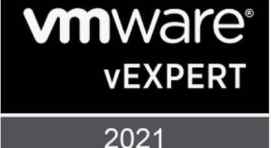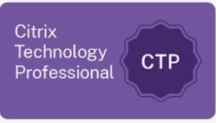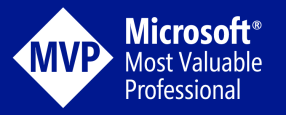Washington DC recently hosted Microsoft Inspire, the rebranded name for the company’s Worldwide Partner Conference. Alongside the One Commercial Partner announcement (a restructure of how the company engages with partners of all sizes), they snuck in some Cloud product news too.
Microsoft 365
Not known for their brilliance with product names, Microsoft released Microsoft 365 to the world. This is not a replacement for Office 365 and it isn’t a product in its own right. Instead, Microsoft 365 is a bundle of other Microsoft products and it comes in two flavors – Enterprise and Business.
- Microsoft 365 Enterprise combines usage rights for Office 365 Enterprise (E3 or E5), Windows 10 Enterprise and Enterprise Mobility + Security. Microsoft designed this version organizations with more than 300 seats. The enterprise version is available as of August 1st, 2017.
- Microsoft 365 Business is designed for organizations with less than 300 seats. It bundles Office 365 Business Premium, Windows 10 and Enterprise Mobility & Security. In preview beginning August 2nd, 2017 and generally available in the Fall this year. The USD $20 per user price is attractive to those smaller organizations that haven’t made the move to Windows 10 yet, and don’t have it covered in an Enterprise Agreement.
In my opinion, this is an interesting play for Microsoft to increase the usage of their products. What are the benefits for Enterprise environments that may already be running EMS? Perhaps the bundling of these products is more cost-effective than your current Enterprise Agreement or the Office 365 license is now attractive enough to kill some of your on-prem servers. For organizations already on Windows 10 and Office 365, perhaps this gives them a chance to play with EMS without significant extra licensing investment. And for organizations that didn’t meet the free Windows 10 upgrade deadline, it softens the cost of getting off Windows 7, for a better Cloud & Office 365 experience. These options make it cost effective for an organization of any size to get onto Windows 10. For smaller organizations, you can sell the Azure AD Domain join story, convincing them to turn off their on-prem Active Directory server.
The Office 365 Business Premium plan itself had three new products added: Microsoft Connections, Microsoft Listings and Microsoft Invoicing. They are rolling out in preview over the next few weeks to the US, UK & Canada with general availability estimated by the end of the calendar year.
Microsoft Connections
There are many third party Cloud services for email marketing, but Microsoft just brought it in-house. Microsoft Connections contains professional templates for newsletters and campaigns, with comprehensive analytics. If they make it easy to move subscribers over from those other providers, I can see organizations ditching Mail Chimp and the like and their associated monthly fees.
Microsoft Listings
This is a single dashboard and data entry portal for your business listing on Facebook, Google, Bing and Yelp. Update your information and it will push it out to the four services. The analytics will show you page views and reviews. Sure it’s nice to have some consolidation here, but only time will tell if this will replace other social media integration platforms. It doesn’t appear to handle scheduling posts as it’s more about the business place listing and I’m wondering if there are any plans to add more services.
Microsoft Invoicing
Now you can generate an estimate or send an invoice to your customer from the web or mobile app. This is the first “light” financial application we’ve seen, specifically targeted at the smaller business. PayPal integration is built-in for accepting payments and the system connects to sync data to QuickBooks. Getting paid is foundational for all businesses but it’s only part of the financial picture, so it would struggle to kick out an incumbent financial platform, unless you’re still tied to a desktop-only accounting program. Even then, I’d like to see integration with the other financial software players and payment providers, it’s not clear if Microsoft plans on taking more steps into the crowded SMB fintech waters.
Microsoft Business Center
Bringing data from these three services together AND adding Microsoft Bookings data, the Business Center gives you some interesting analytics without the need for Power BI. The main dashboard can reveal insights like correlations between your email campaigns, your online views and your booking numbers. This is where Microsoft plays the game well, as the integration of their products gives them a competitive advantage. The more that business data can reveal intelligence and opportunities, the better, and that’s even affordable & easy to use now for SMBs.
MileIQ
Microsoft also announced that the MileIQ mileage tracker app would be included in Office 365 Business Premium. The automated tracking and the detailed reporting of business and personal trips in your car look pretty cool. I can’t wait to see if this one will hit Australia too at some stage.
Closing thoughts
One annoying aspect is the alignment of these capabilities with the Business Premium plan. There are significant benefits for a small business under 300 seats to use an Office 365 Enterprise E3 plan (example: archiving, legal hold or remote desktop usage rights (shared computer activation) for Office 365 ProPlus). This can be selectively mixed with other users on Business Premium, but it means that SMB E3 customers miss out on some attractive new features. Ultimately, I’d love to see these products as standalone options that you could add to E3, but I’m not sure that will happen.
You should give Microsoft credit though – their rate of innovation does not look like slowing down any time soon. I’m impressed to see this dedication to the SMB market with these new products that specifically hit a business need. Time will tell though if Microsoft can be a complete “business in a box”, if indeed that’s where they are going with all of this.






